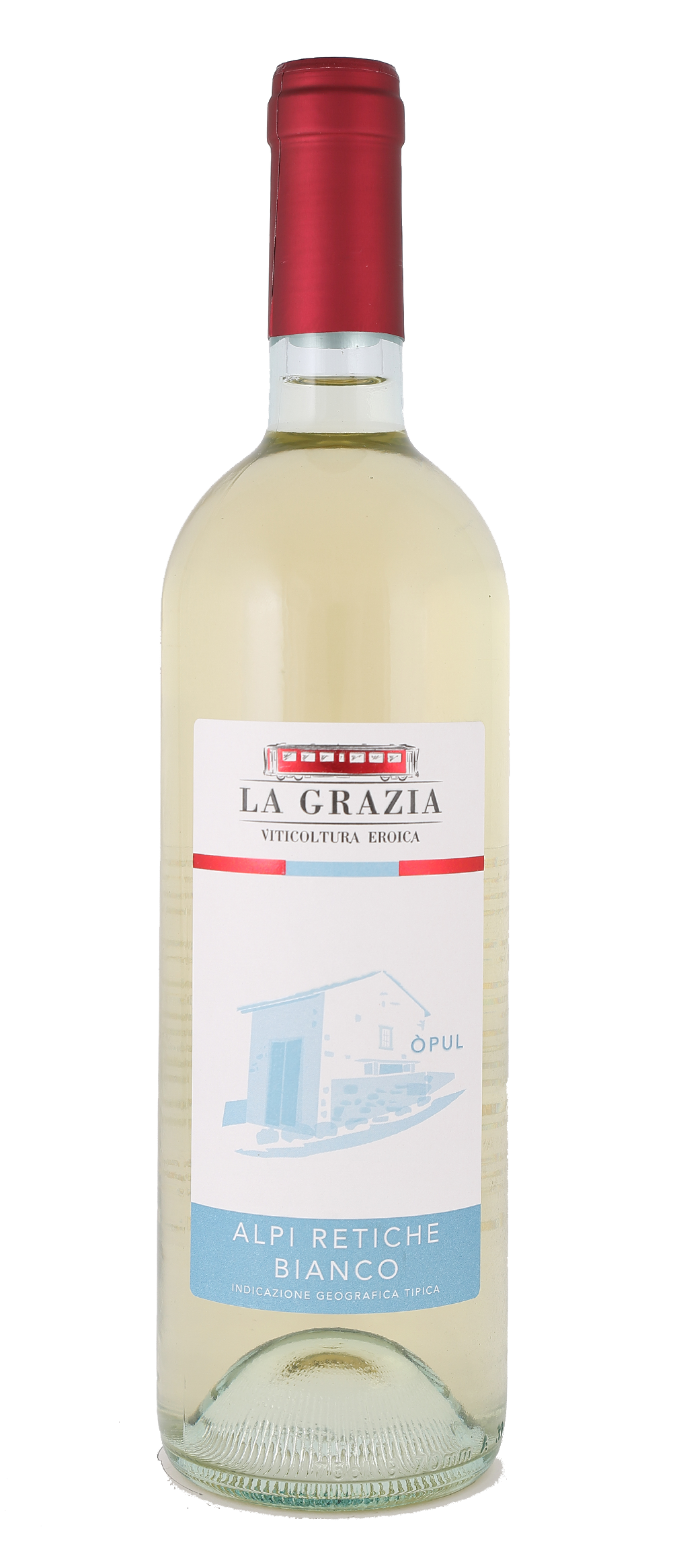
White Rhaetitian Alps
Typical Geographic Indication
Origin (the grape, the vine)
Both in terms of vocation and tradition, Valtellina is the supreme land of “red wines” made from the noble Nebbiolo grape variety.
Only one “white” is truly worthy of mention: Pinot Blanc.
Like Nebbiolo, Pinot prefers a sub-continental climate with broad temperature ranges, extremely clear and bright skies, as well as fresh soils, of medium to good fertility.
In order to achieve all this, Azienda La Grazia has planted its very own Pinot Blanc in specially positioned and exposed vine fields, with soft rolling terraces, cooler and facing north-west. Hence the name of this wine: ÒPUL, which in local dialect denotes a vineyard on the left bank of the Adda river, the freshest part of the valley.
The Pinot Blanc grape contributes in particular towards the wine’s special structure and refinement.
Half way through fermentation, the juice of Rossola and Pignola are added to the must of this grape. Historic and autochthonous varieties, both were present in Valtellina before Nebbiolo. This match made in heaven enriches the fruity notes of Pinot with exquisite fresh floral mountain notes, highlighting its specialness and specificity.
The Cellar
Pinot Bianco grapes are placed in crates in mid-September and taken to the cellar, where they remain in refrigerated cells for 5-7 days, so that they are thoroughly cooled before pressing. They are then softly crushed and the resulting must, still cool, is placed in a tank to decant heavy dregs. The liquid is then stored in oak barrels and barriques, where slow and steady fermentation begins, at low temperatures.
Rossola and Pignola grapes are harvested in late September, pressed and delicately crushed, so as no to lacerate their skins, to obtain a transparent must. Once this must starts to ferment, Pinot assemblage takes place and the completion of fermentation is awaited. This is followed by clarification racking and then bottling, in the late Spring.
In the glass
The wine presents a vibrant and luminous straw yellow. An immediately fresh aroma, with floral and slightly medicinal notes, accompanied by impressions of peach pump and yellow fruits. On the palate it is immediately enveloping, then dry and citrus, complex, with a slightly toasted conclusion.
Can be served as an aperitif wine but ideally served with starters and fish.
Evolution
Best appreciated in its youth, with all its fragrance and floral freshness. These qualities persist for two years after harvesting, before developing subtle and mineral impressions. Suitable for ageing for up to 4 – 5 years after harvesting.
